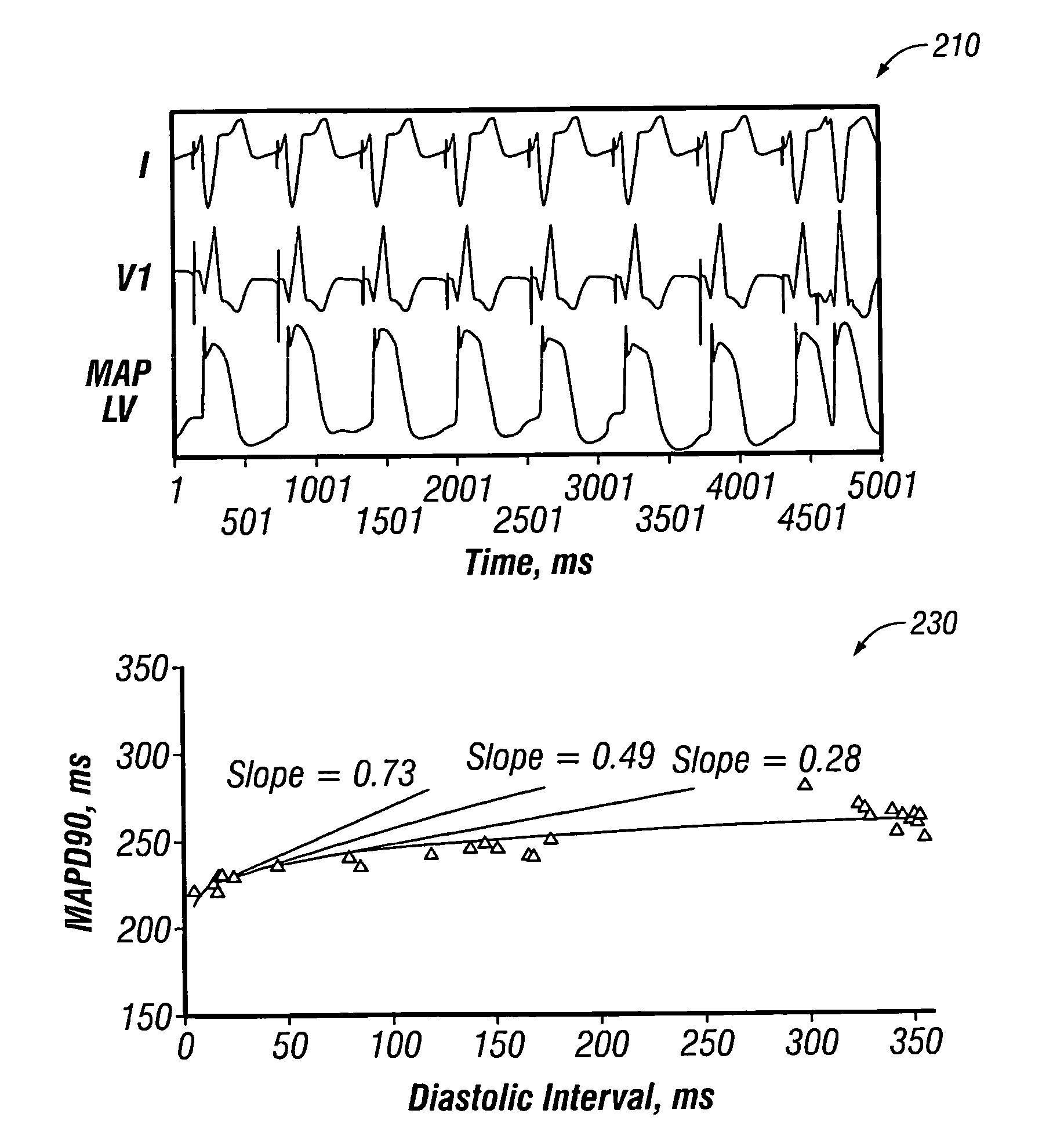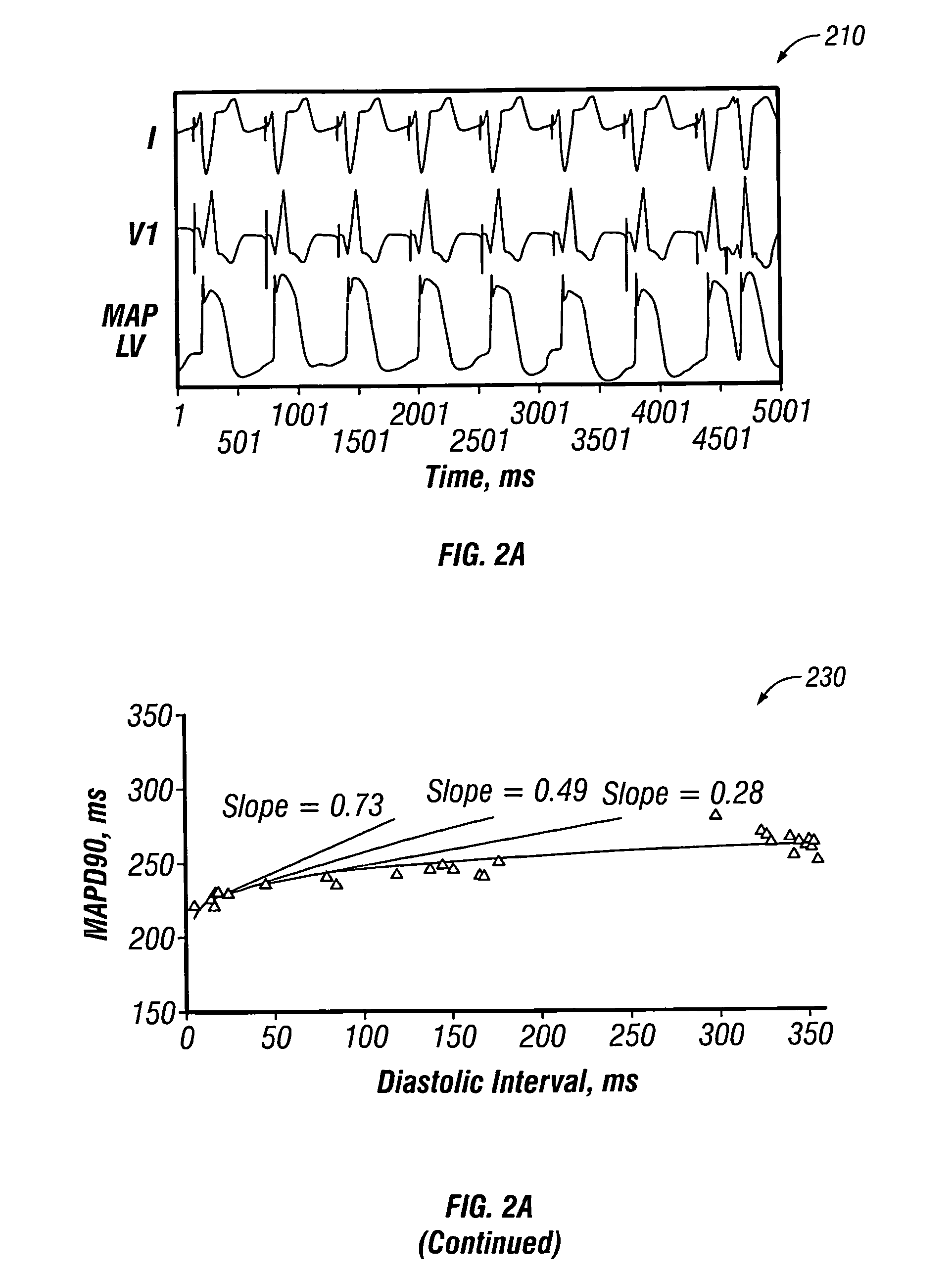Heart rhythm disorders are extremely common in the United States, and cause significant mortality and morbidity.
However, there are few methods to predict future rhythm disorders (“arrhythmias”) before they occur.
Instead, physicians rely upon detecting the actual rhythm disturbance, which precludes early detection and possible prevention of these disorders.
Many methods currently used also may have serious side-effects.
However, clinical practice is so rudimentary in this area that it relies upon observing episodes of AF to detect future risk, yet many episodes of AF are still missed or misclassified (Chugh, Blackshear et al.
Therefore, prediction of AF has been difficult.
The same problems exist for predicting a variety of important heart instabilities.
Current methods of predicting future VT / VF are inadequate.
The inability to predict future VT / VF also leads to a potential overuse of preventive therapy in the form of the implantable cardioverter defibrillators (Myerburg and Castellanos 2006).
In addition, localized regions of scar tissue or ischemic tissue propagate electrical activity (depolarization) slower than normal tissue, causing “slow conduction,” which may factor into formation of these wavelets.
This may lead to errant, circular propagation.
Further, “reentry” or “circus motion” may result, which disrupts depolarization and contraction of the atria or ventricles, and leads to abnormal rhythms (“arrhythmias”).
However, whether the AF is the cause or effect of the atrial cardiomyopathy (“heart failure of the atrium”) has been unclear.
However, testing using tissue specimens is not a viable clinical tool.
Taking tissue from the heart (biopsy) is a risky procedure that may potentially cause serious side-effects including death.
1994), but with modest results because this factor may not be central to all forms of AF (AF can arise in individuals without atrial fibrosis or conduction slowing).
As a result, these and related measurements are not often used clinically.
Other methods used to assess atrial function include elevated levels of natriuretic peptides, yet these methods have not been incorporated into clinical practice in humans because their predictive value is also poor (Therkelsen, Groenning et al.
As a result, these methods are not used in clinical practice.
Methods that have been proposed to predict AF risk, or track propensity, are non-specific and not often used.
Further, individuals with ventricular disease have higher left atrial pressures which may predispose them to developing AF.
However, none of these clinical associations accurately identifies which individuals will develop AF, or when.
Thus, the studies did not demonstrate results relevant to most patients with AF, who do not have preceding atrial flutter.
1999), but also have limited predictive value.
These methods have had very limited success.
However, these drugs act over years, not acutely, and it is unclear how well they reverse or stabilize atrial cardiomyopathy that has already developed.
This poses several problems.
Second, echocardiography or ventriculography are only reproducible for LVEF within broad ranges, and other methods such as radionuclide angiography are more cumbersome.
Third, clinical practice does not show significance in day-to-day or week-to-week fluctuations in structural indices.
However, these methods over-detect at risk individuals by a factor of up to 18:1 (i.e. 18 individuals have to receive prophylactic ICD therapy to save one individual who will actually develop VT / VF) (Myerburg and Castellanos 2006).
This method also fails to identify over 50% of all individuals who experience SCA and whose LVEF is not reduced.
These approaches have not translated into the patient care setting.
Most of these methods focus on presumed reentrant mechanisms, and are indirect.
Finally, abnormal delayed enhancement of the ventricle using magnetic resonance imaging may identify risk for VT / VF (Schmidt, Azevedo et al.
However, the mechanism linking autonomic activity with arrhythmias is unclear—particularly in humans.
However, none of these methods work in all patient populations, and some have not been shown to reduce VT / VF in tandem with improvements in heart failure (Bradley 2003b).
However, these drugs act over years, rather than acutely.
However, it remains unclear whether cardiac resynchronization therapy itself improves the aspects of heart failure that lead to VT / VF, which is why many physicians implant an ICD in tandem with a resynchronization device (ACC / AHA / ESC 2006).
However, current studies poorly describe methods of placing a permanent pacemaker or defibrillator lead to reduce VT / VF.
However, many patients do not experience right ventricular cardiomyopathy due to pacing, and physicians still practice right ventricular pacing.
However, as described above, obtaining tissue samples from human atria in human being is very difficult.
 Login to View More
Login to View More  Login to View More
Login to View More 


